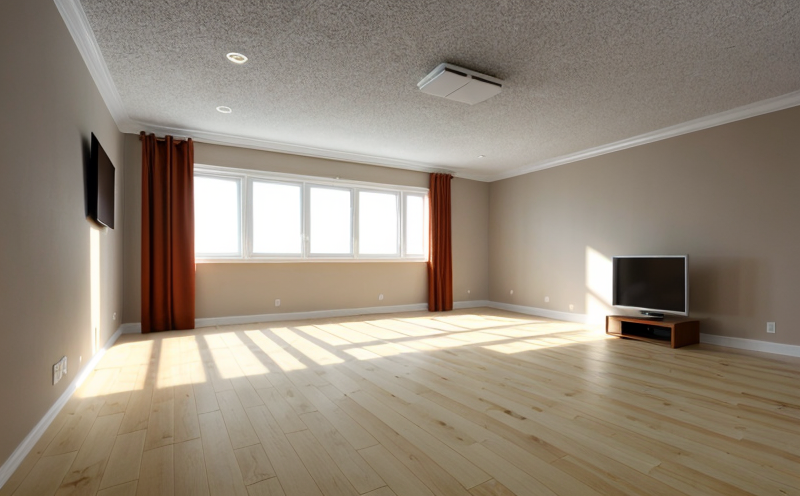ASTM E413 Classification of Sound Insulation Ratings (STC)
The American Society for Testing and Materials (ASTM) Standard Test Method E413 provides a standardized procedure for determining the sound insulation performance of building elements. This method quantifies the ability of partitions, walls, floors, and other building components to attenuate airborne sound. It is widely recognized in the acoustics industry as a means to classify the effectiveness of materials used in construction.
The primary metric derived from this standard is known as Sound Transmission Class (STC), which represents the average reduction in sound level that a partition or wall achieves between rooms. STC ratings are expressed numerically and are used by architects, builders, and engineers to specify appropriate levels of sound isolation for various building types.
The testing procedure outlined in ASTM E413 involves placing test specimens between two controlled environments—typically referred to as room A (source) and room B (receiver). Noise sources such as speakers or noise generators are positioned within room A, while microphones placed in room B measure the sound pressure level. The difference between these levels is then calculated against a reference value to determine the STC rating.
The process typically requires careful preparation of test specimens according to ASTM E413 guidelines. This includes ensuring that all interfaces are properly sealed and that any additional materials or modifications do not affect the integrity of the specimen. Compliance with these standards ensures accurate measurements and reliable results, which are crucial for meeting regulatory requirements.
Understanding STC ratings is essential for designing spaces where privacy and quiet are important, such as offices, hospitals, schools, and residential properties. By specifying appropriate STC levels during the design phase, architects can ensure that new constructions meet or exceed expected performance standards. Additionally, ongoing monitoring of existing buildings allows facility managers to identify potential issues early on, preventing costly repairs down the line.
ASTM E413 is just one part of a broader suite of acoustical testing methods used in building construction. Other relevant standards include ASTM E90 for airborne sound insulation and ASTM C352 for impact noise. Together, these standards provide comprehensive guidance on how to assess various aspects of a structure’s acoustic properties.
Compliance with ASTM E413 helps ensure that buildings meet the necessary criteria set forth by local authorities having jurisdiction (AHJs), as well as international organizations like ISO and EN. For example, many countries have adopted regulations requiring specific STC ratings for certain types of commercial or residential spaces.
Understanding the nuances of ASTM E413 allows professionals in fields such as architecture, engineering, and construction to make informed decisions about materials selection and design choices. Proper implementation can lead to better acoustic performance, enhanced occupant comfort, and reduced noise pollution—all critical factors in creating healthy indoor environments.
Benefits
- Enhanced Privacy: Higher STC ratings mean greater sound isolation between spaces, reducing unwanted noise transmission.
- Improved Comfort: Quieter environments contribute to overall occupant satisfaction and well-being.
- Regulatory Compliance: Meeting specified STC levels ensures adherence to local building codes and standards.
- Better Design Flexibility: Knowing the exact requirements early on allows for more creative architectural solutions.
Customer Impact and Satisfaction
The ability to accurately measure and classify sound insulation through ASTM E413 has significant impacts on customer satisfaction across multiple sectors. In healthcare facilities, for instance, maintaining a low noise environment is vital not only for patient comfort but also for ensuring proper functioning of sensitive diagnostic equipment.
- Healthcare: Hospitals and clinics benefit from reduced ambient noise levels which can improve patient recovery times.
- Education: Schools with better acoustic performance experience fewer disruptions, leading to improved learning outcomes.
- Residential: Homeowners appreciate quieter interior spaces, contributing positively to their quality of life.
Competitive Advantage and Market Impact
Offering ASTM E413 compliant services positions companies at the forefront of innovation within the acoustics industry. This not only enhances brand reputation but also attracts clients seeking cutting-edge solutions for their projects.
By leveraging advanced testing methodologies, firms can demonstrate their commitment to quality and sustainability, thereby gaining a competitive edge over competitors who may lack similar capabilities. Furthermore, compliance with international standards such as ASTM E413 helps companies expand into global markets where stringent acoustic regulations are in place.
The ability to provide accurate STC ratings also opens up opportunities for collaboration with other industry leaders, fostering innovation and driving technological advancements within the field of building acoustics.





